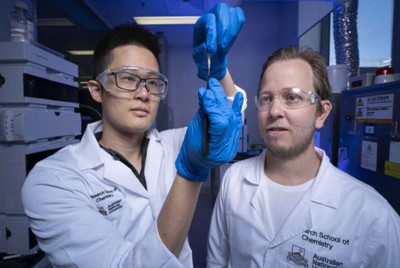
Scientists from The Australian National University (ANU) have invented a new jelly material that mimics biological matter such as skin, ligaments and bone, and which is very strong, self-healing and able to change shape.
The team say the hydrogel could enable a new class of medical implants or artificial muscles for next-generation robots that could one day swim.
Hydrogels are gels with a high-water content and used in a range of products, including contact lenses.
Lead senior researcher Associate Professor Luke Connal from the ANU Research School of Chemistry said the new hydrogel's dynamic chemical bonds gave it features unlike any other materials previously reported.
"With the special chemistry we've engineered in the hydrogel, it can repair itself after it has been broken like human skin can," he said.
"Hydrogels are usually weak, but our material is so strong it could easily lift very heavy objects and can change its shape like human muscles do. This makes our hydrogel suitable for artificial muscles in what we call soft robotics.
"Our hydrogel's ability to self-heal, as well as its flexibility and strength, make it an ideal material for wearable technology and various other biomedical devices."
Dr. Zhen Jiang, a co-researcher and Postdoctoral Fellow, said a form of temperature control could change the shape of the hydrogel, allowing it to perform as an artificial muscle.
"In a lot of science fiction movies, we see the most challenging jobs being done by artificial humanoid robots. Our research has made a significant step towards making this possible," he said.
Dr. Jiang had the inspiration for the new hydrogel from one of his Ph.D. projects.
"We anticipate that researchers working on the next-generation of soft robots will be interested and excited about our new way of making hydrogels," he said.
The team can make the hydrogel with simple and scalable chemistry. They will develop a 3-D printable ink based on the hydrogel.
The team's study is published in Advanced Materials.

